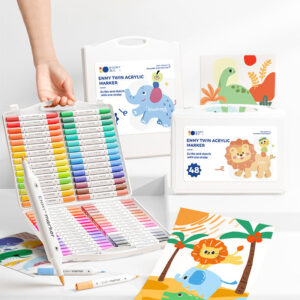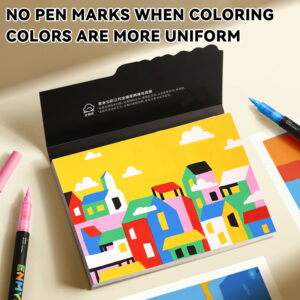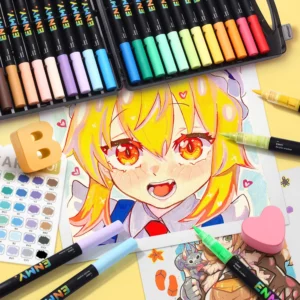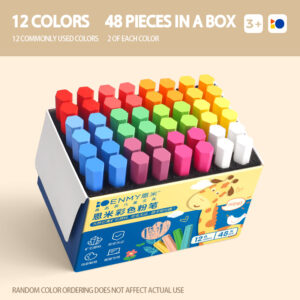In the vibrant world of vision, the three primary colors serve as the fundamental building blocks for constructing the entire spectrum of hues. Despite their simplicity, they hold profound mysteries, enabling the creation of the countless colors we encounter daily. Whether it’s the dazzling stars in the night sky or the vivid strokes on a painting, their magic lies in the combination and transformation of these primary colors.

The Primary Colors of Light: The Magic of Illumination
The primary colors of light are Red, Green, and Blue, commonly referred to as the RGB system. This concept is rooted in modern physics’ exploration of light. The white light we see every day is actually a mixture of light with different wavelengths. By combining red, green, and blue light in varying proportions, almost all colors perceivable by the human eye can be generated.
In our daily lives, many display devices, such as computer monitors, televisions, and mobile phone screens, operate based on the principle of the primary colors of light. When you take a close look at these screens, you’ll notice they consist of countless tiny red, green, and blue pixels. By controlling the intensity of red, green, and blue light in each pixel, the screens can present a rich and colorful visual experience. For instance, when red and green pixels emit light at the same intensity, we perceive the color yellow. When red, green, and blue pixels all emit light at their maximum intensity, white is displayed; conversely, when none of them emit light, the screen shows black. This method of creating colors through the mixture of light is known as additive color mixing.
The principle of the primary colors of light is also widely applied in stage lighting, photography, and other fields. Stage lighting designers can create various magnificent and colorful stage atmospheres by adjusting the intensity and proportion of red, green, and blue lights, enhancing the visual impact of performances. Photographers often use the RGB model to adjust and optimize the color of images during post – processing, making the photos more vivid and lifelike.
The Primary Colors of Pigments: The Art of Color Mixing
Unlike the primary colors of light, the primary colors of pigments are Magenta, Yellow, and Cyan, often abbreviated as CMY. In fields such as painting and printing, the pigments we use do not emit light on their own but instead present colors by absorbing and reflecting light. The principle of the primary colors of pigments is based on subtractive color mixing, meaning that when different pigments are mixed, they absorb more light, reducing the amount of reflected light and resulting in darker colors.
For example, when magenta and yellow pigments are mixed, the magenta pigment absorbs green light, and the yellow pigment absorbs blue light. As a result, only red light is reflected, and we see the mixed color as red. When magenta, yellow, and cyan pigments are mixed in appropriate proportions, almost all light is absorbed, theoretically producing black. However, in practical painting and printing, due to issues such as pigment purity, it’s often difficult to obtain a pure black by mixing these three pigments. Therefore, in the printing industry, black (Black) ink is added, forming the CMYK color model, which helps achieve more accurate black representation and a wider range of colors.
In painting, artists master the rules of mixing the primary colors of pigments. By blending magenta, yellow, and cyan pigments in different ratios, they can create an infinite variety of colors. Whether it’s the delicate watercolor paintings, the thick – textured oil paintings, or the vivid illustrations, the skillful application of these primary pigments is essential. In the printing field, the CMYK color model is crucial for ensuring the accurate reproduction of colors in printed materials, from exquisite books and albums to vibrant posters, all relying on the mixture of magenta, yellow, cyan, and black inks.
The Three Primary Colors in Daily Life
The three primary colors not only hold significant importance in the fields of art and technology but also have a close connection with our daily lives. In fashion design, designers apply the principles of primary color combinations to create various stylish and beautiful clothing styles. For example, the classic red – white – blue color scheme is simple yet full of vitality, winning the favor of many. In interior decoration, the proper use of primary colors and their derived hues can create living environments with different styles. Warm red tones can bring a passionate atmosphere, while fresh blue tones evoke a sense of tranquility and comfort.
Moreover, the three primary colors play a key role in advertising design, logo design, and other areas. Many well – known brand logos cleverly use primary colors or their combinations to convey the brand’s core values and unique characteristics in a concise and clear manner. For instance, the red logo of Coca – Cola is eye – catching and energetic, making it easily recognizable; PepsiCo’s blue and white color scheme gives a sense of youth and fashion.
As the cornerstone of the world of color, the three primary colors, with their unique principles and extensive applications, influence every aspect of our lives. From the additive color mixing in the optical world to the subtractive color mixing in the realm of pigments, and from artistic creation to daily life, the three primary colors continuously showcase their charm and infinite possibilities. A deeper understanding of the mysteries of the three primary colors not only allows us to better appreciate and comprehend the beauty of color but also stimulates our creativity, enabling us to use color to create more wonderful works and a more colorful life in various fields.






